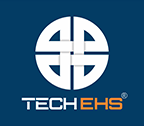
Table of Contents
Introduction
The very purpose of pharmaceutical companies is to save lives. But behind every breakthrough drug and medical innovation, there’s an intricate web of safety protocols, compliance standards, and risk management frameworks that keep operations running smoothly. For EHS professionals, ensuring safety isn’t just about ticking regulatory boxes—it’s about embedding a culture where risk is minimized and operational excellence is the norm.
Let’s examine how EHS leaders in the pharmaceutical sector tackle the complexities of compliance, chemical safety, incident management, workforce training, and environmental responsibility. More importantly, let’s explore how they transform safety from obligation to competitive advantage.
Regulatory Compliance: Keeping Pace with an Ever-Changing Landscape
Every EHS leader knows that regulations in the pharmaceutical industry are complex and constantly evolving. Regulatory bodies like the FDA, EMA, and WHO impose stringent guidelines, including Good Manufacturing Practices (GMP) and OSHA’s workplace safety requirements.
Yet, compliance isn’t just about avoiding fines—it’s about ensuring that every step in the manufacturing process is accountable, traceable, and built on a safety foundation.
Imagine an EHS manager overseeing a multinational pharmaceutical company’s compliance framework. Instead of manually scrambling to interpret new regulatory updates, they leverage an integrated compliance management system. This system consolidates all regulatory changes in real-time, ensuring every site is aligned and audit-ready. This proactive approach prevents last-minute compliance chaos and establishes a culture where regulatory adherence is second nature.
Incident Management: From Reactive to Predictive Safety
Traditionally, incident management has been reactive—an accident happens, reports are filed, and corrective actions are taken. But what if safety leaders could anticipate potential risks before they materialize?
Many forward-thinking pharmaceutical companies are now implementing predictive analytics in their EHS strategies. By analyzing historical data, near-miss reports, and worker observations, they can identify patterns and trends that signal a high-risk event.
For example, an AI-powered safety observation module identifies an increase in minor chemical spills in a specific lab. Instead of waiting for a serious incident, the system flags the issue, prompting a targeted safety intervention—perhaps additional EHS training or process adjustments. The result? Reduced risk, enhanced safety, and a proactive approach that keeps operations seamless.
Environmental Sustainability: Safety Beyond the Factory Walls
Pharmaceutical companies are increasingly held accountable for workplace safety and environmental impact. Waste disposal, emissions management, and sustainable operations are now integral to a company’s long-term success.
Picture a facility implementing a closed-loop waste management software where excess solvents and byproducts are repurposed rather than discarded. This would minimize environmental harm, create cost savings, and enhance the company’s reputation as a sustainable leader.
Advanced EHS software allows pharmaceutical manufacturers to monitor their environmental footprint in real-time, tracking everything from energy consumption to carbon emissions. These insights enable leadership teams to make data-driven decisions that align business objectives with sustainability goals.
Final Thoughts: Safety as a Culture, Not a Checklist
EHS professionals in the pharmaceutical industry are not just safety enforcers but change-makers. Their role extends beyond compliance, influencing how organizations approach risk, efficiency, and innovation.
The challenge isn’t just about meeting today’s safety requirements—it’s about anticipating tomorrow’s risks and embedding a safety-first mindset across every business function.
The real question isn’t whether pharmaceutical companies need to improve their safety practices—it’s how fast they can do so to ensure a safer, smarter, and more sustainable future.



